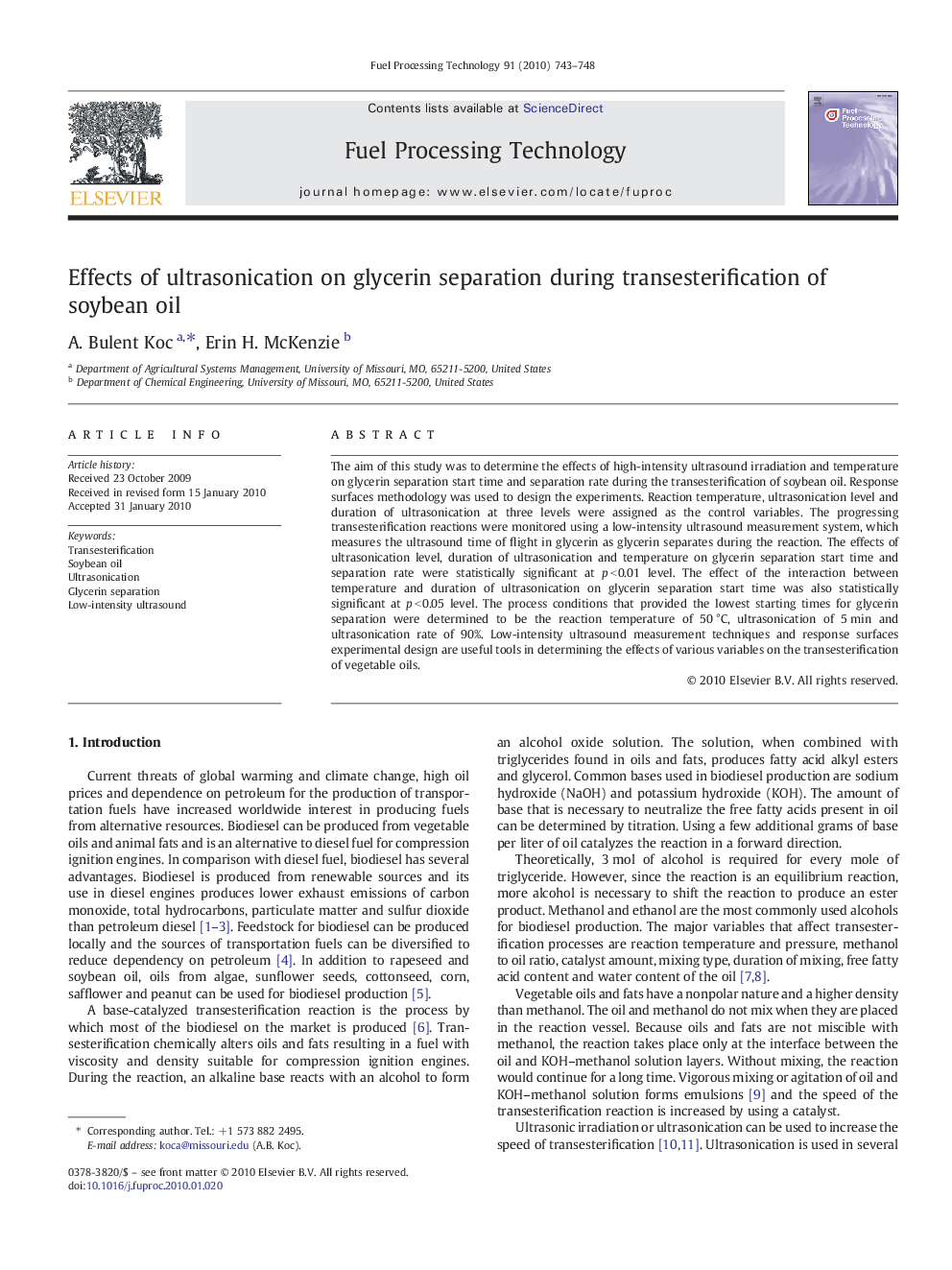| Article ID | Journal | Published Year | Pages | File Type |
|---|---|---|---|---|
| 210751 | Fuel Processing Technology | 2010 | 6 Pages |
The aim of this study was to determine the effects of high-intensity ultrasound irradiation and temperature on glycerin separation start time and separation rate during the transesterification of soybean oil. Response surfaces methodology was used to design the experiments. Reaction temperature, ultrasonication level and duration of ultrasonication at three levels were assigned as the control variables. The progressing transesterification reactions were monitored using a low-intensity ultrasound measurement system, which measures the ultrasound time of flight in glycerin as glycerin separates during the reaction. The effects of ultrasonication level, duration of ultrasonication and temperature on glycerin separation start time and separation rate were statistically significant at p < 0.01 level. The effect of the interaction between temperature and duration of ultrasonication on glycerin separation start time was also statistically significant at p < 0.05 level. The process conditions that provided the lowest starting times for glycerin separation were determined to be the reaction temperature of 50 °C, ultrasonication of 5 min and ultrasonication rate of 90%. Low-intensity ultrasound measurement techniques and response surfaces experimental design are useful tools in determining the effects of various variables on the transesterification of vegetable oils.
